Biology > EXAM > ONS ONCC Chemo Renewal UPDATED 2022/2023 QUESTIONS WITH 100% CORRECT SOLUTIONS (All)
ONS ONCC Chemo Renewal UPDATED 2022/2023 QUESTIONS WITH 100% CORRECT SOLUTIONS
Document Content and Description Below
Neoadjuvant therapy does not increase survival when compared to adjuvant therapy. It only changes the timing of treatment and can change surgical options if the tumor is shrunk enough. If this occurs,... the patient may only require a lumpectomy plus radiation therapy instead of needing a mastectomy Main benefit of neoadjuvant chemotherapy (breast cancer patient) A comprehensive geriatric assessment (CGA) is a multidisciplinary evaluation to assess life expectancy and risk of morbidity and mortality in the older patient. This assessment tool would evaluate and include the following areas: functional status, socioeconomic issues, psychosocial distress, comorbidities, cognitive function, nutritional status, polypharmacy, and a medication review (NCCN Older Adult Oncology Guidelines, version 1.2015). Due to Mrs. Turner's age and comorbidities, her oncologist performs a comprehensive geriatric assessment. You know that this assessment covers all but which of the following: 00:16 01:22 65 The NCCN Older Adult Oncology Guidelines (version 1.2015) provides information on what is included in a comprehensive geriatric assessment. Currently, more than 60% of cancers in the United States occur in people age ______and older and as the oncology world ages, nearly half (46%) of cancer survivors are 70 years of age or older Two of the agents (docetaxel and carboplatin) that Mrs. Turner will receive are categorized as irritants. Docetaxel can cause a significant reaction if it extravasates. It can lead to edema, erythema, occasional pain and blister formation (ONS Chemo/Bio guidelines, 2014). That is the most likely reason that Mrs. Turner was given a port for her treatments. Some patients will receive their treatments through a peripheral IV without incident. Just because they are intravenous agents does not mean that a port is required and needing a port has nothing to do with her being older in age. Since none of these agents are vesicants, they likely could have been given safely via peripheral route but having a port placed is OK as well. What is your best explanation for why Mrs. Turner was given a port to receive her chemotherapy? Irrirtants _____________can cause inflammation, pain, and burning but rarely cause tissue necrosis comparable to a vesicant (unless a large amount or a very high concentration of the irritant is extravasated). Vesicants _____________can cause blistering and significant pain and tissue damage and destruction, leading to tissue death. Non-DNA-binding solutions remain in the local area of the extravasation, which improves the possibility of drug deactivation. DNA-binding agents attach to DNA nucleic acids, causing the antagonist to be ingested cellularly, leading to progressive tissue destruction A further classification of an antineoplastic agent's potential to cause damage is whether its mechanism of action includes DNA binding. Bendamustinea Dactinomycin Daunorubicin Doxorubicin Epirubicin Idarubicin Mechlorethamine Mitomycin DNA Binding Irritants Amsacrine Paclitaxel Vinblastine Vincristine Vindesine Vinorelbine DNA Nonbinding vessicants Sodium thiosulfate Inject 2 ml of sodium thiosulfate for each milligram of mechlorethamine extravasated. Inject subcutaneously into extravasation site using a 25 gauge or smaller needle (change needle with each injection). Monitor extravasation site according to the institution's policies and procedures. Extravasciation Alkylating / Mechlorethamine tx Apply warm compresses. Dexamethasone 8 mg twice daily for 14 days Extravasciation Alkylating: Oxaliplatin Totect Apply ice pack (remove 15 minutes prior to Totect treatment). Infusion should be initiated within six hours of extravasation. Infused over 1-2 hours for three days in an area other than the extravasation site The dose recommended is based on the patients' body surface area. • Day 1: 1,000 mg/m2 • Day 2: 1,000 mg/m2 • Day 3: 500 mg/m Extravasation Tx: Anthracyclines --- Daunorubicin, doxorubicin, epirubicin, idarubicin Hyaluronidase Apply warm pack for 15-20 minutes four times daily the next 24-48 hours and keep extremity elevated. Administer 1 ml of hyaluronidase subcutaneously in five separate injections, each containing 0.2 ml of the solution using a 25 gauge or smaller needle. Extravasation Tx: Plant alkaloid Vinblastine, vincristine, vindesine, vinorelbine Apply ice pack for 15-20 minutes four times daily the first 24 hours. No known antidote Extravascation Tx: Taxanes Docetaxel, paclitaxe include aching and tightness along a peripheral vein above the administration site that occurs as the drug infuses, as well as potential redness or darkening of the vein without swelling and ulceration. Blood return is typically present; if not, an infiltration may have occurred Signs of symptoms of venous irritation: warm compress Most sources recommend the application of heat using _______________ to help reduce local discomfort and the restart of the peripheral IV in a larger vein (Polovich et al., 2014). irinotecan The manufacturer of ______________ recommends topical flushing of the skin with sterile water and application of ice in the event of extravasation of the drug (Pfizer Inc., 2012). Burning, stinging pain around the administration site, although it is important to note that some patients do not experience any pain with vesicant extravasation and may in fact experience a feeling of coolness at the site (Polovich et al., 2014). Extravasation signs and symptoms can include Constipation is not a likely side effect with the agents that Mrs. Turner is to receive. Actually diarrhea is more likely when receiving both of the targeted therapies in this regimen. Knowing the most common side effects of these agents (docetaxel, carboplatin, trastuzumab and pertuzumab), which of the following side effects will you not be covering in your patient teaching today since it is not usually seen with the chemotherapy agents Mrs. Turner is going to receive? ANC = (Neutrophils + Bands) x WBC / 100 To calculate the ANC: Find the WBC, the polys/neutrophils and bands on your CBC (neutrophils can be called many things in a differential including: polymorphonuclear cells or polys, PMNs, granulocytes, segmented neutrophils, or segs). WBC = 2.1 Add the polys and bands (polys = 22%, bands = 4%). 22 + 4 = 26 Multiply the sum of the polys and bands by the WBC. 26 X 2.1 = 54.6 Multiply the product by 10. 54.6 X 10 = 546 Mrs. Turner's ANC is 546 ANC Calculation Restriction of fresh fruits and vegetables is no longer necessary based on the evidence (ONS PEP resource Prevention of Infection https://www.ons.org/practice-resources/pep/prevention-infection/prevention-infection-general) You meet with Mrs. Turner to discuss neutropenia and her increased risk of infections and to reinforce with her some ways that she can prevent infections. You are familiar with the ONS PEP resources including the resource Prevention of Infection. You review with Mrs. Turner what the evidence recommends to prevent infections. Which of the following is unlikely to be effective for infection prevention? Recommended for Practice: Adherence to General Infection Control Recommendations Antibiotic Prophylaxis in At-Risk Patients Antifungal Prophylaxis in At-Risk Patients Antiviral Prophylaxis for Select At-Risk Patients Catheter Care Bundle for Prevention of Central Line Associated Infection (CLABSI) Chlorhexidine Skin Prep Colony-Stimulating Factors Including Biosimilars for At-Risk Patients Contact Precautions for Resistant Organisms Environmental Interventions Hand Hygiene With Alcohol Sanitizer Influenza Vaccination Pneumococcal and Meningococcal Vaccination Likely to Be Effective: Antibiotic Abdominal Lavage in Colorectal Surgery Antimicrobial Coated CVC Catheters in Adults Chlorhexidine Impregnated Washcloths—Chlorhexidine Bath Institutional Initiatives Positive Expiratory Pressure and Self-Monitoring Pre-construction Planning Preoperative Antibiotics Prevention of Infections: Practice Recommended Effectiveness Unlikely: Colony Stimulating Factors By Intravenous Rather Than Subcutaneous Route Frequent IV Tubing and Component Changes Restriction of Fresh Fruits and Vegetables Not Recommended for Practice: Extended Post-Operative Antibiotics Implantable Gentamycin Sponge Use of Live Attenuated Vaccines Prevention on Infections: Practices No Long Recommended Per the NCCN Guidelines (http://www.nccn.org/professionals/physician_gls/pdf/myeloid_growth.pdf), because of Mrs. Turner's age ≥ 65 as well as a previous neutropenic episode, she would be a candidate to receive a GCSF. Her febrile neutropenic episode requiring hospitalization puts her at high risk for additional neutropenia. Which of the following do you feel will be done with the remaining cycles of chemotherapy to hopefully prevent Mrs. Turner from having additional problems with neutropenia? full dose Evidence shows that older patients with cancer can safely obtain the same treatment benefits as younger patients when they receive ________ standard chemotherapy regimens. Many physicians are reluctant to give full-dose chemotherapy to older adults perhaps due to of fear of adverse events like febrile neutropenia. Suboptimal dosing from increasing the length of time between cycles or from dose reduction is a serious issue because large, randomized clinical trials have demonstrated that the delivery of lower doses or shorter courses of chemotherapy can reduce overall survival in older patients with breast cancer or lymphoma 85% Amgen (2007) defines RDI as "is a quantification of how closely an administered course of chemotherapy treatment adheres to a specific regimen." Three separate clinical trials evaluating outcomes in patients with breast cancer related to RDI have demonstrated improved overall survival and 10-year disease free survival in patients who receive a RDI > or = ____?_____ Per the prescribing information for Perjeta (http://www.gene.com/download/pdf/perjeta_prescribing.pdf) it states to assess LVEF prior to initiation of PERJETA and at regular intervals (every six weeks in the neoadjuvant setting) during treatment to ensure that LVEF is within the institution's normal limits. Mrs. Turner's chemotherapy is given every 3 weeks so she should have her LVEF evaluated prior to cycle #3. If Mrs. Turner was receiving trastuzumab without pertuzumab, the recommendation per the prescribing information for Herceptin (http://www.gene.com/download/pdf/herceptin_prescribing.pdf) is to monitor baseline LVEF measurement immediately prior to initiation of Herceptin and monitor LVEF every 3 months during and upon completion of Herceptin. You know the reason that Mrs. Turner had another MUGA scan prior to receiving her 3rd cycle of neoadjuvant chemotherapy is because it is recommended for which of the following agents? Mrs. Turner's initial MUGA scan result was 55% and is now decreased to 48% which is a > 10% decrease in her LVEF. Per the prescribing information for Perjeta, if the LVEF is 45%, or is 45% to 49% with a 10% or greater absolute decrease below the pretreatment value, withhold PERJETA and trastuzumab and repeat LVEF assessment within approximately 3 weeks (http://www.gene.com/download/pdf/perjeta_prescribing.pdf). You should call the doctor to provide the results of the MUGA scan compared to her initial MUGA scan and anticipate that the trastuzumab and pertuzumab will be held for this cycle of chemotherapy. Mrs. Turner should have a repeat MUGA scan prior to cycle #4 and based on those results, discontinue PERJETA and trastuzumab if the LVEF has not improved or has declined further, unless the benefits for the individual patient outweigh the risks. You realize that since Mrs. Turner is on a regimen that includes pertuzumab that she should have her LVEF monitored every 6 weeks since she is receiving neoadjuvant therapy. You review Mrs. Turner's most recent MUGA scan and see that her LVEF is 48%. heart function Two of the agents in the patients currecnt regimen, trastuzumab and pertuzumab, have the potential to cause a decline in _____________ 8.4% It is important that the nurse recognizes certain drugs that, when given together, may result in a higher risk of adverse events. For example, in neoadjuvant clinical trials using trastuzumab and pertuzumab, the incidence of decline in left ventricular ejection fraction (LVEF) was 1.9% in patients treated with trastuzumab and docetaxel, compared to ______ of those treated with trastuzumab, docetaxel, and pertuzumab (Genentech, 2013). Consider the potential toxicity related to each drug. Understand the monitoring guidelines for each drug. Have knowledge of clinically significant signs and symptoms. Key Points for Combination Therapy Improved patient outcomes. Increased nurse satisfaction. Potential cost savings. Evidence-based practice can have positive effects, such as: Smoking Increased age Alcohol intake History of Polyps Risk factors for colon cancer 50 The chance of developing colorectal cancer increases markedly after age _____. Roughly 9 out of 10 people diagnosed with colorectal cancer are at least ____ years old. Racial and ethnic backgrounds (African Americans and Jews of Eastern European descent (Ashkenazi Jews) have highest incidence) Diet high in red and processed meats Physical inactivity, obesity Type 2 diabetes Family history of colon cancer or inflammatory bowel disease Inherited familial syndromes (FAP, HNPCC) Other risk factors for the development of colorectal cancer include: FOLFOX6 Oxaliplatin 100mg/m2 and Leucovorin 400 mg/m2 IV over 2-hours, then 5-fluorouracil (5-FU) 400 mg/m2 IV bolus, followed by 5-FU 3,000 mg/m2 IV by continuous infusion over 46 hours Treatment regiment for Colorectal Cancer Cold sensory neuropathy Which of the following is a unique side effect that occurs with the agent oxaliplatin? Transient paresthesia Dysesthesia and hypoesthesia in the hands, feet, perioral area, or throat. Jaw spasm Abnormal tongue sensation Dysarthria Eye pain, and a feeling of chest pressure have also been observed Cold sensory neuropathy symptoms Duloxetine Gabapentin and Opioid Combination Effective treatments for peripheral neuropathy Per the ONS PEP resources for mucositis (https://www.ons.org/practice-resources/pep/mucositis), of the listed answers, oral care protocol would be what the nurse needs to ensure Mr. Patterson is doing at home for his early mucositis to prevent it from worsening. Thinking that this is early mucositis, which of the following should the nurse instruct Mr. Patterson to do to help his symptoms? Risk factors for mucositis that are not from the agents themselves include the following: dental disease and poor oral hygiene, ill-fitting dentures, advanced age and youth age, history of alcohol and tobacco use, poor nutrition, intake of irritating foods (spicy or acidic foods), and dehydration (Information from the chemo/bio guidelines page 214-215). Mr. P. has both a poor diet and also uses tobacco (both chewing tobacco and cigarettes) and alcohol. The use of tobacco products is a big risk factor for development of mucositis. Which of the following of Mr. Patterson's lifestyle factors put him at the most risk for developing mucositis? Recommended for Practice: Cryotherapy Low Level Laser Therapy in Patients Undergoing Hematopoietic Cell Transplantation Low Level Laser Therapy in Patients With Head and Neck Cancer Oral Care Protocol Sodium Bicarbonate Likely to Be Effective: Benzydamine for Patients Receiving Combination Chemotherapy and Radiation Therapy Benzydamine for Radiation-Related Mucositis Lactobacillus Lozenges Palifermin for Patients Receiving Chemotherapy and Radiation for Head and Neck Cancer Palifermin with High-Dose Chemotherapy and/or Hematopoietic Cell Transplantation Recommended and effective care in mucositis Single gown use with back closure Two pairs of chemotherapy gloves Which of the following are recommended as standard PPE when there is any potential exposure for hazardous drugs? (select all that apply) Administering HDs by any route (PO, IV, IT, etc.) Handling any HD vials, ampules, or packaging materials Introducing or withdrawing needles or dispensing pins from HD vials Transferring drugs from HD vials to other containers using needles, dispensing pins, or syringes Opening ampules or HDs Expelling air from an HD-filled syringe Spiking IV bags containing HDs and changing IV tubing Priming IV tubing with HDs Handling HD leakage from tubing, syringe, and connection sites Discontinuing infusions of HDs Disposing of HDs and items contaminated by HDs Handling the body fluids of a patient who had received HDs in the past 48 hours Cleaning HD spills Touching any surface that is potentially contaminated with HD residue PPE should be worn whenever there is a potential that hazardous drugs could be released into the environment like in the following situations: [Show More]
Last updated: 2 years ago
Preview 1 out of 13 pages
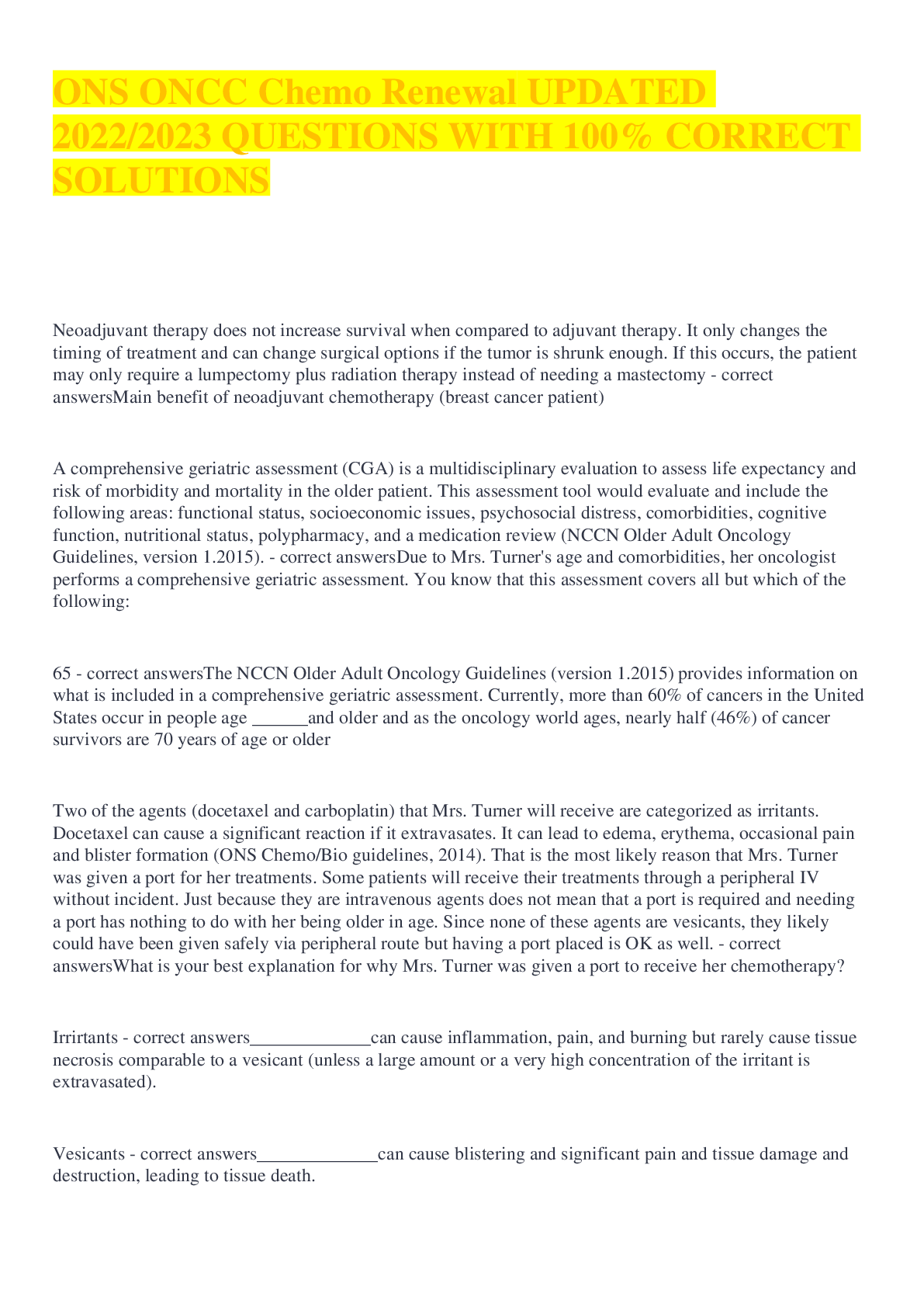
Buy this document to get the full access instantly
Instant Download Access after purchase
Buy NowInstant download
We Accept:

Reviews( 0 )
$14.00
Can't find what you want? Try our AI powered Search
Document information
Connected school, study & course
About the document
Uploaded On
Nov 17, 2022
Number of pages
13
Written in
Additional information
This document has been written for:
Uploaded
Nov 17, 2022
Downloads
0
Views
84

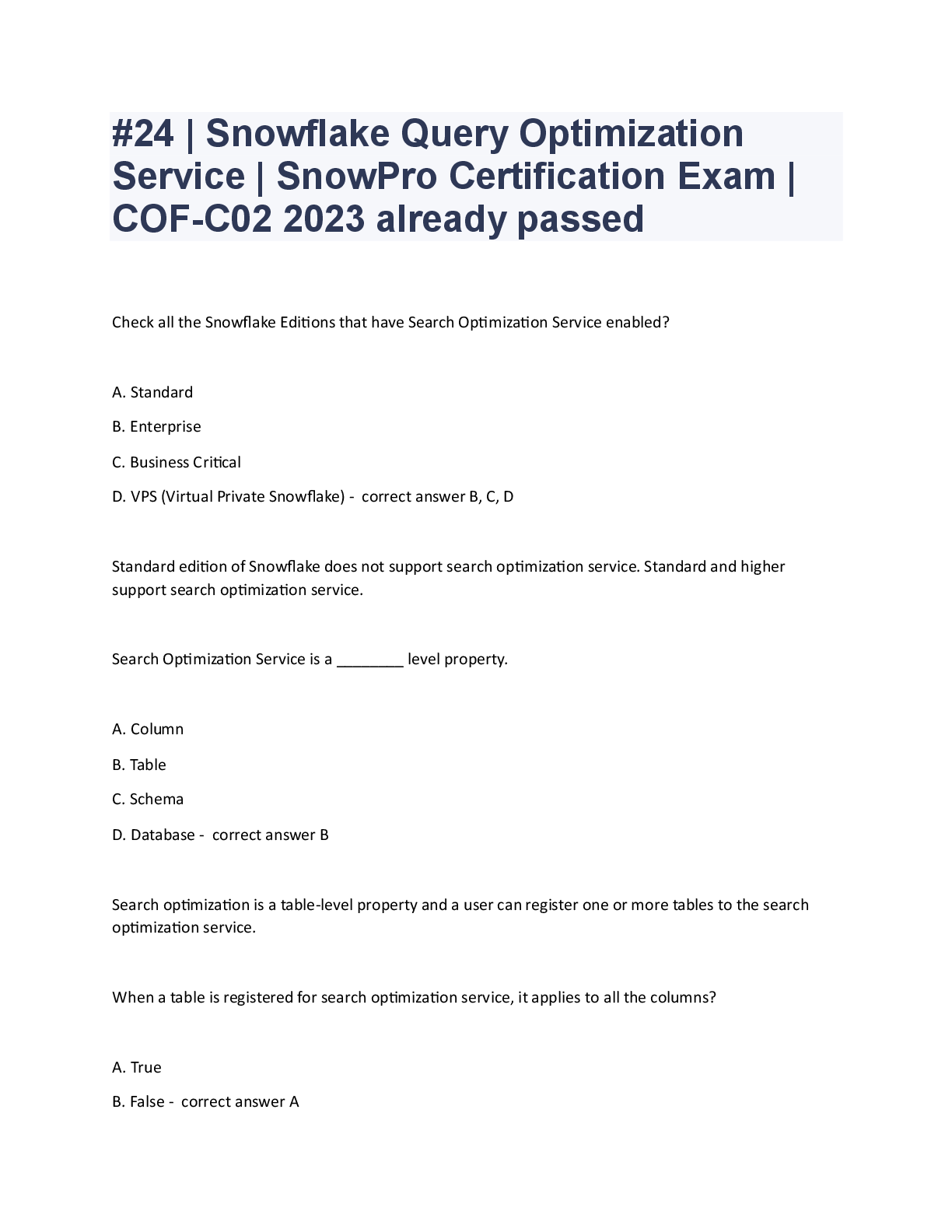



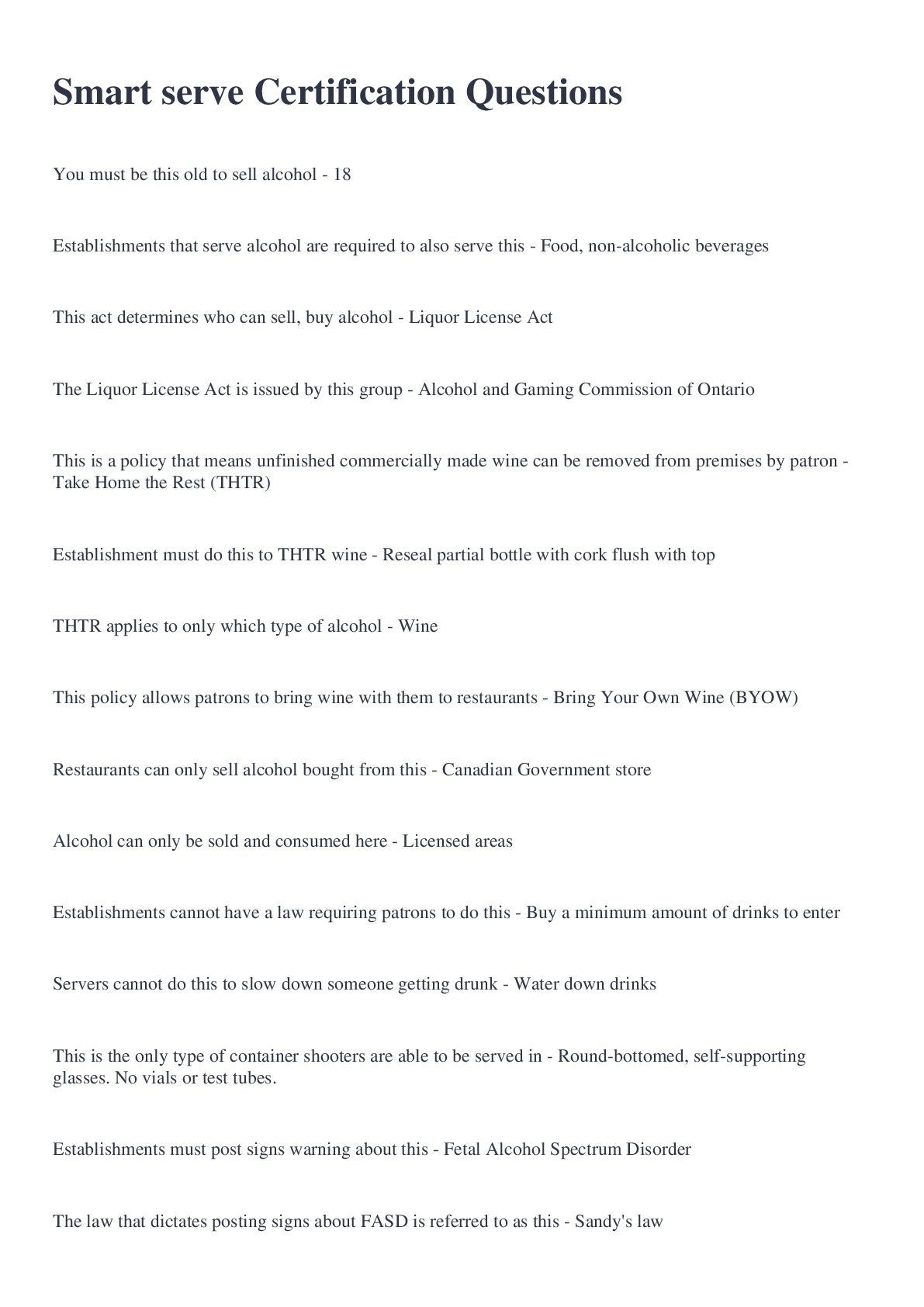
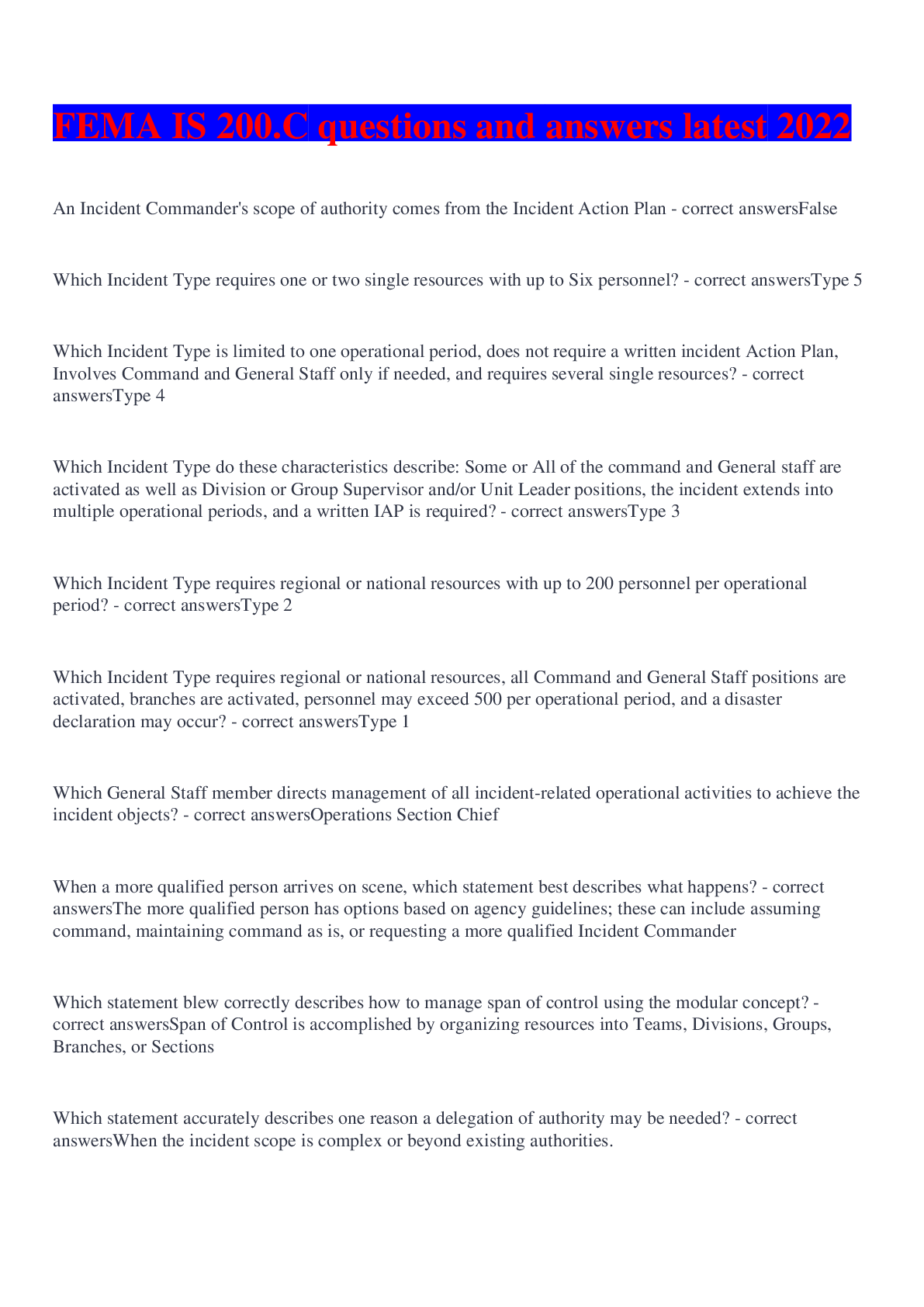
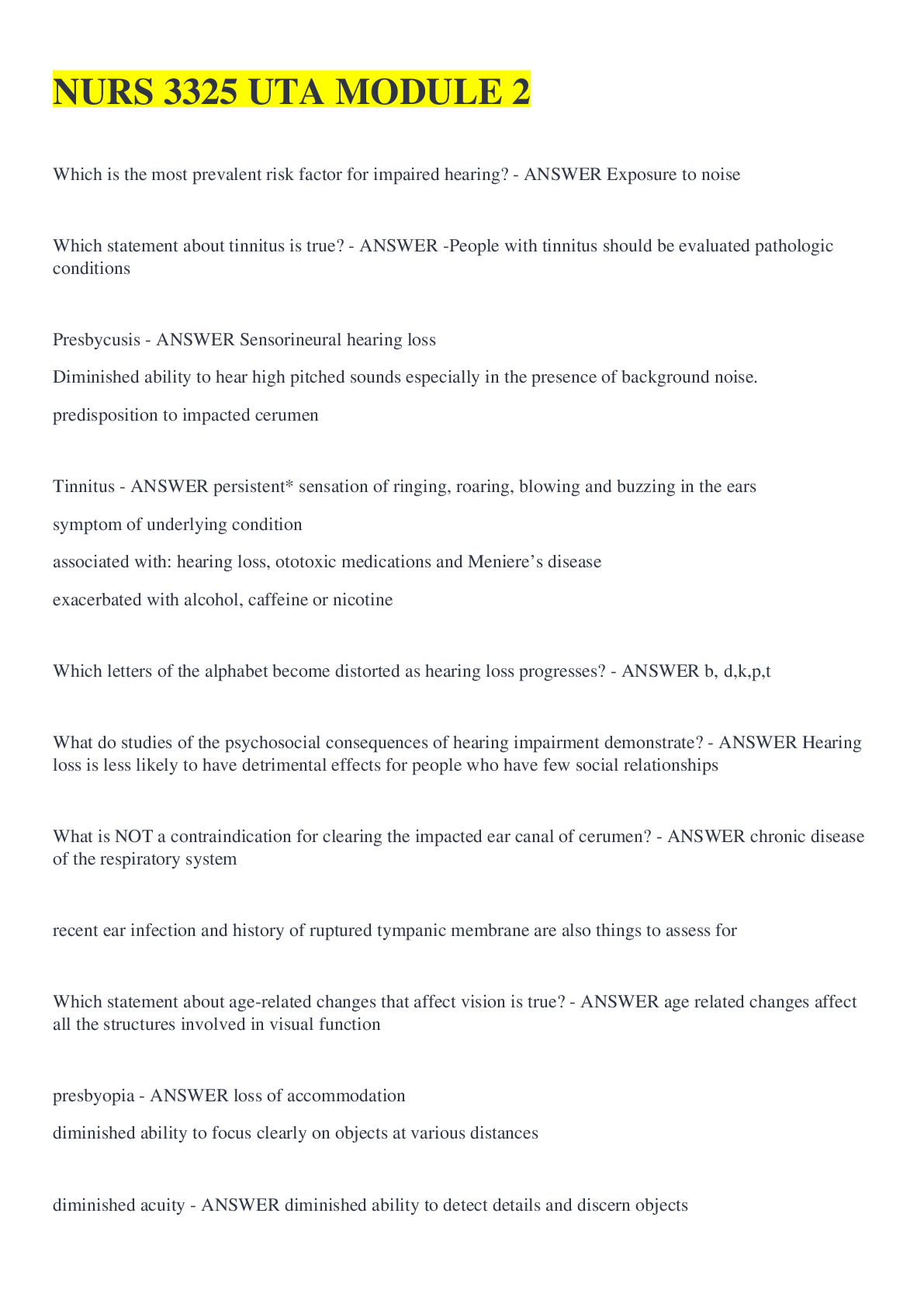
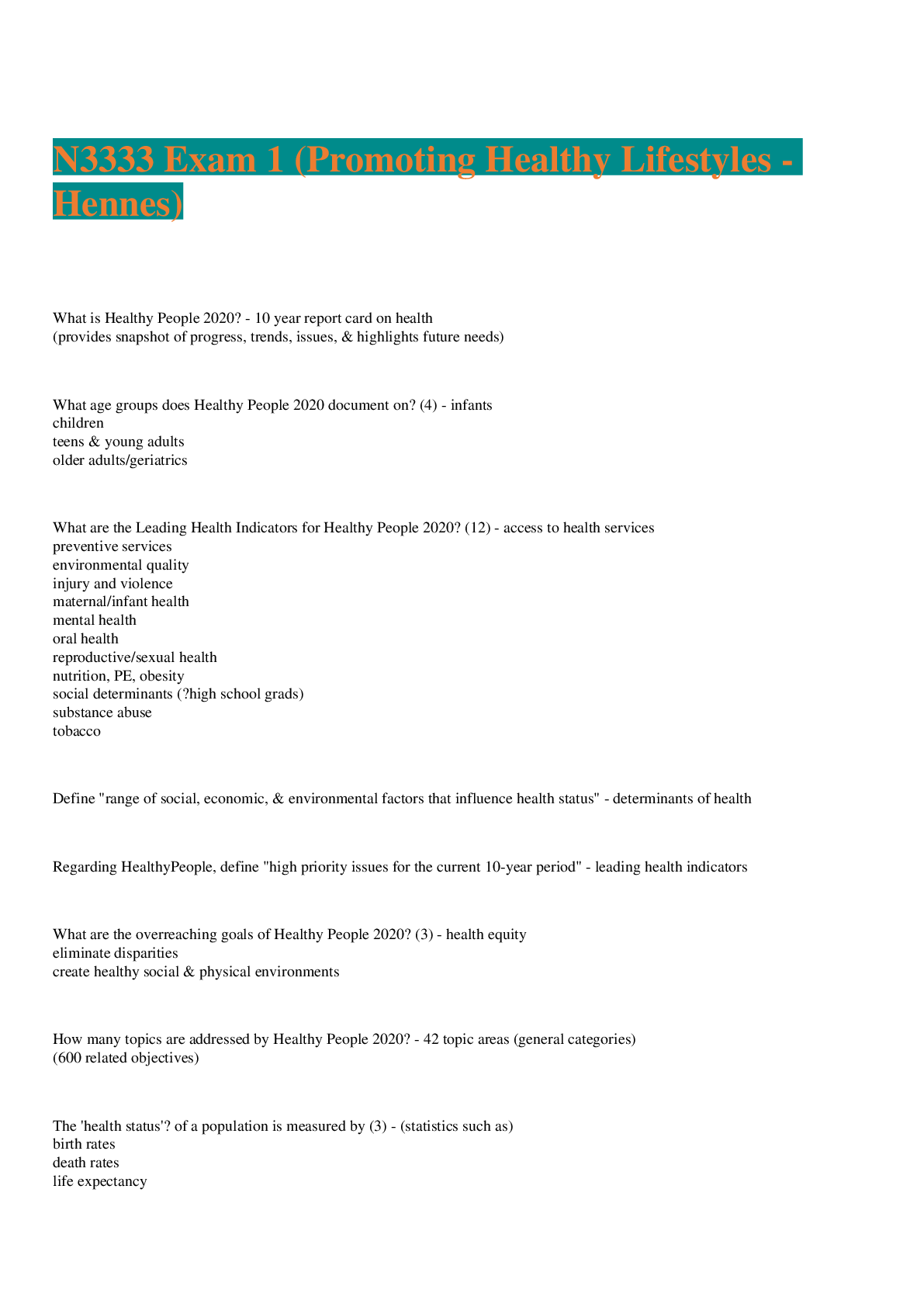
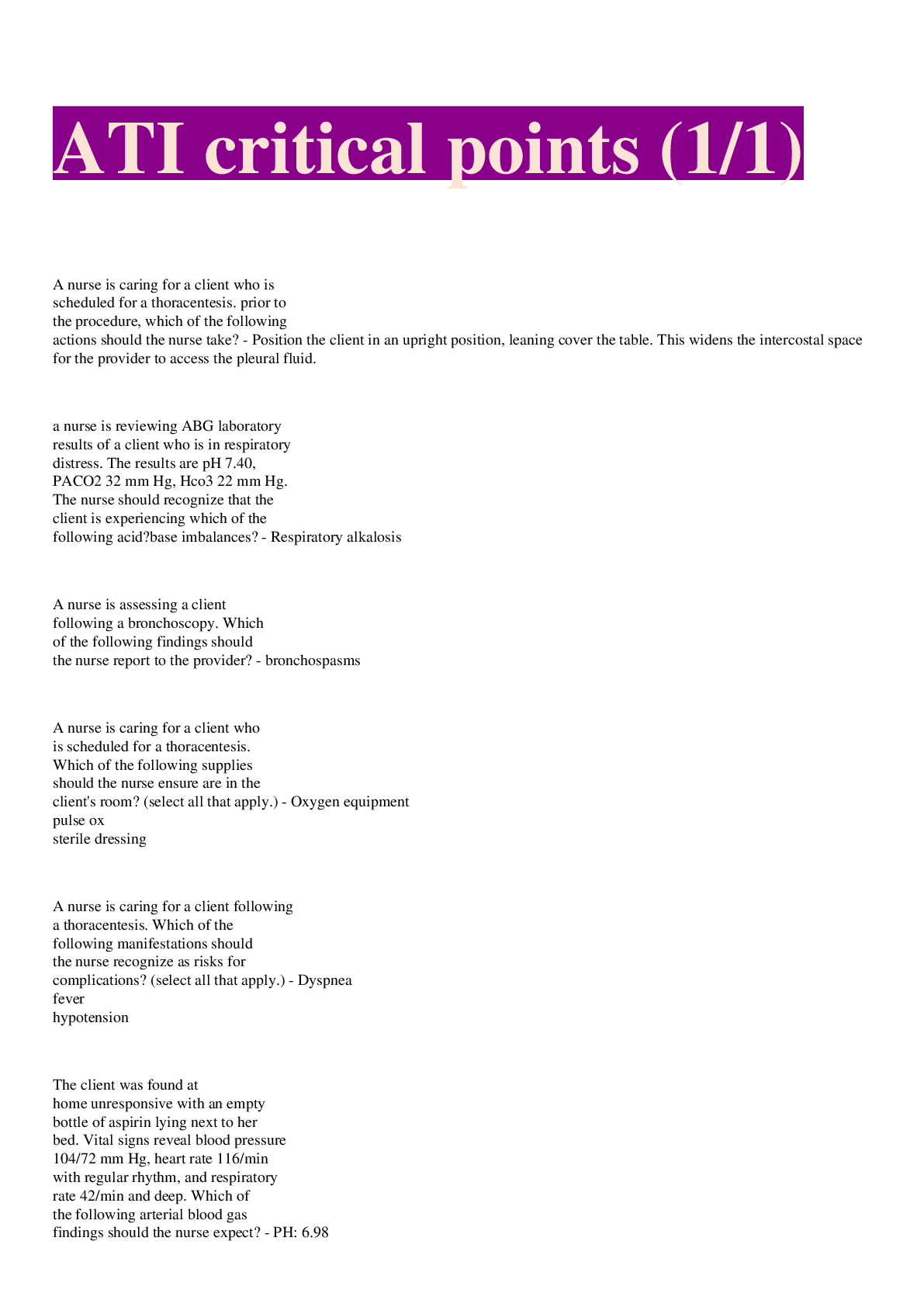
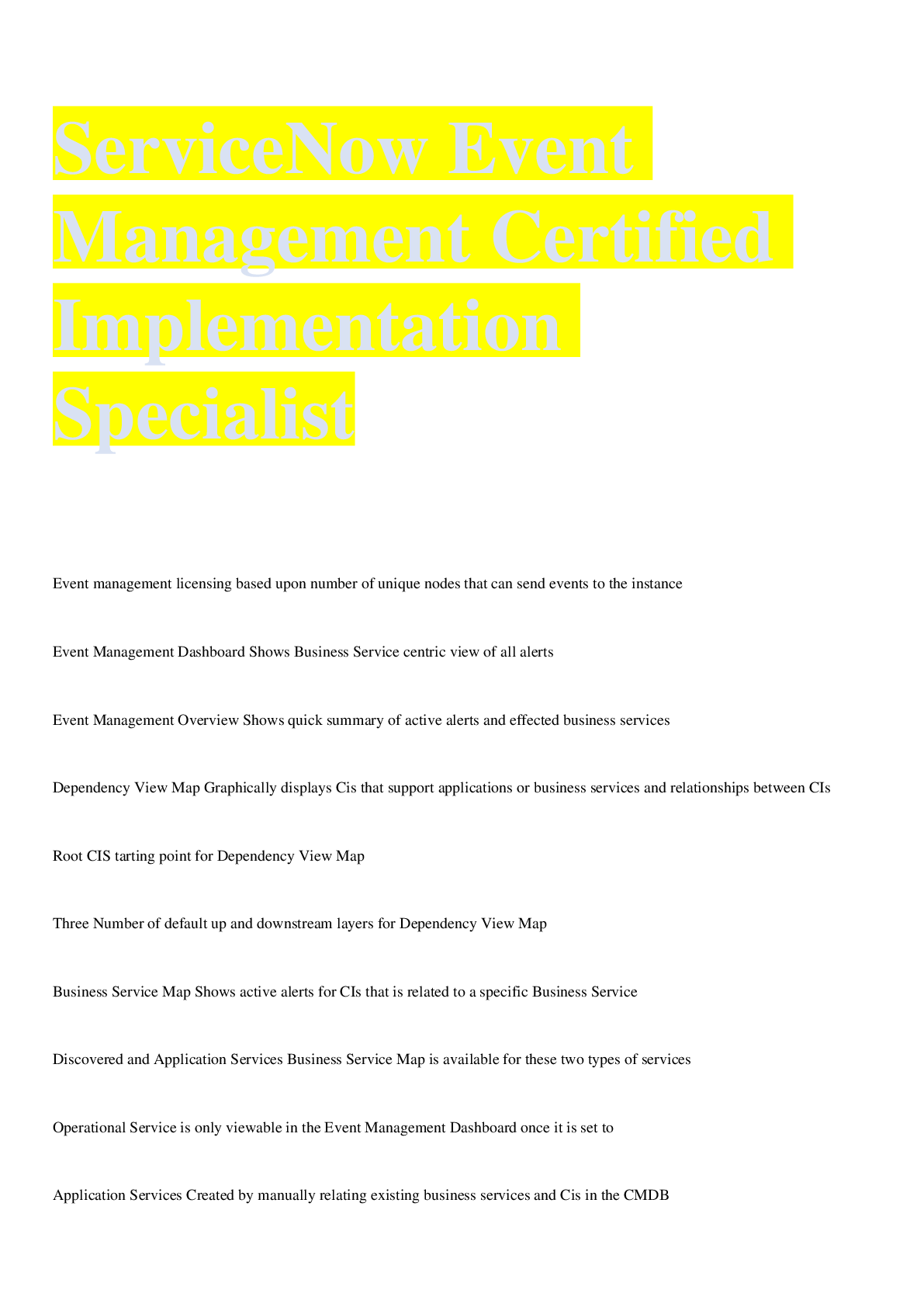
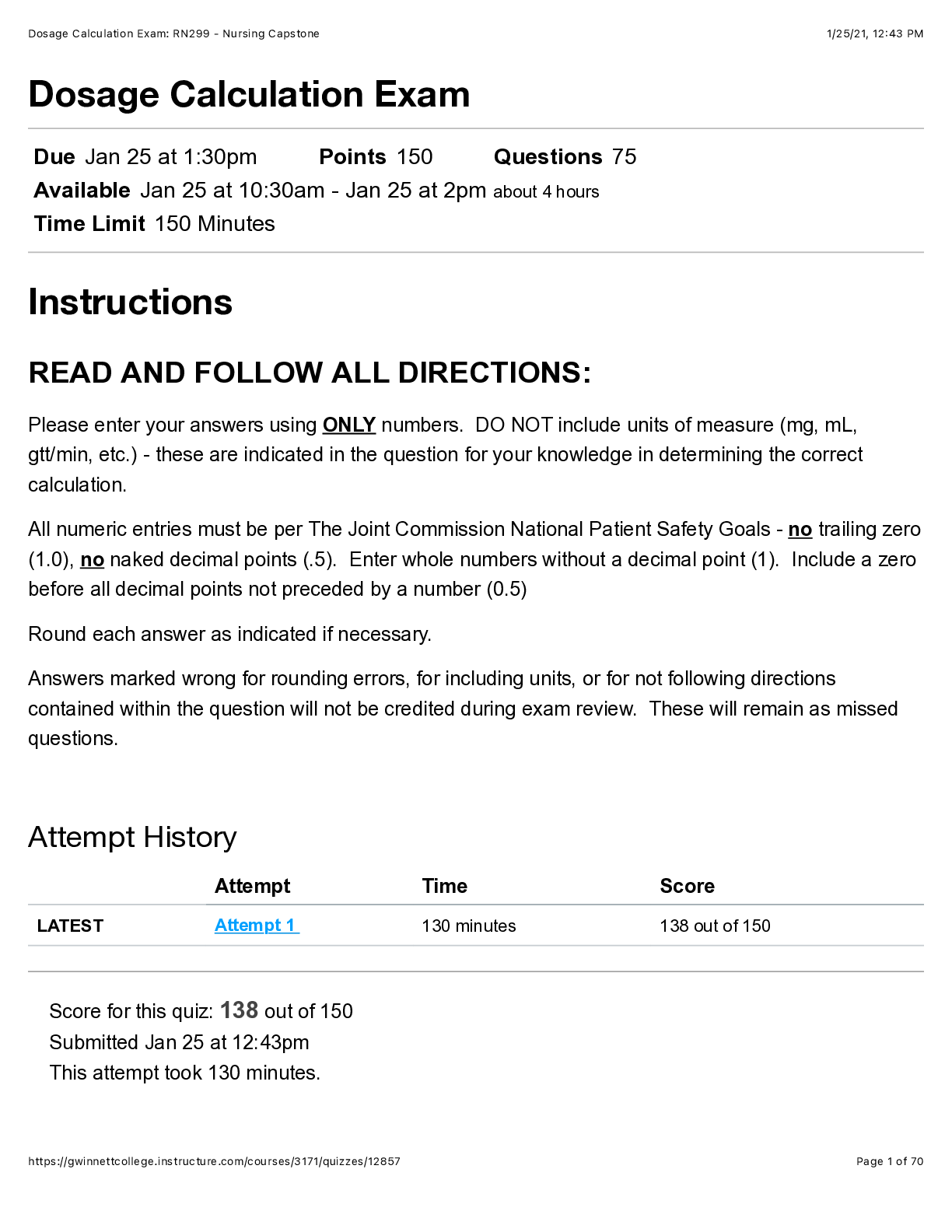
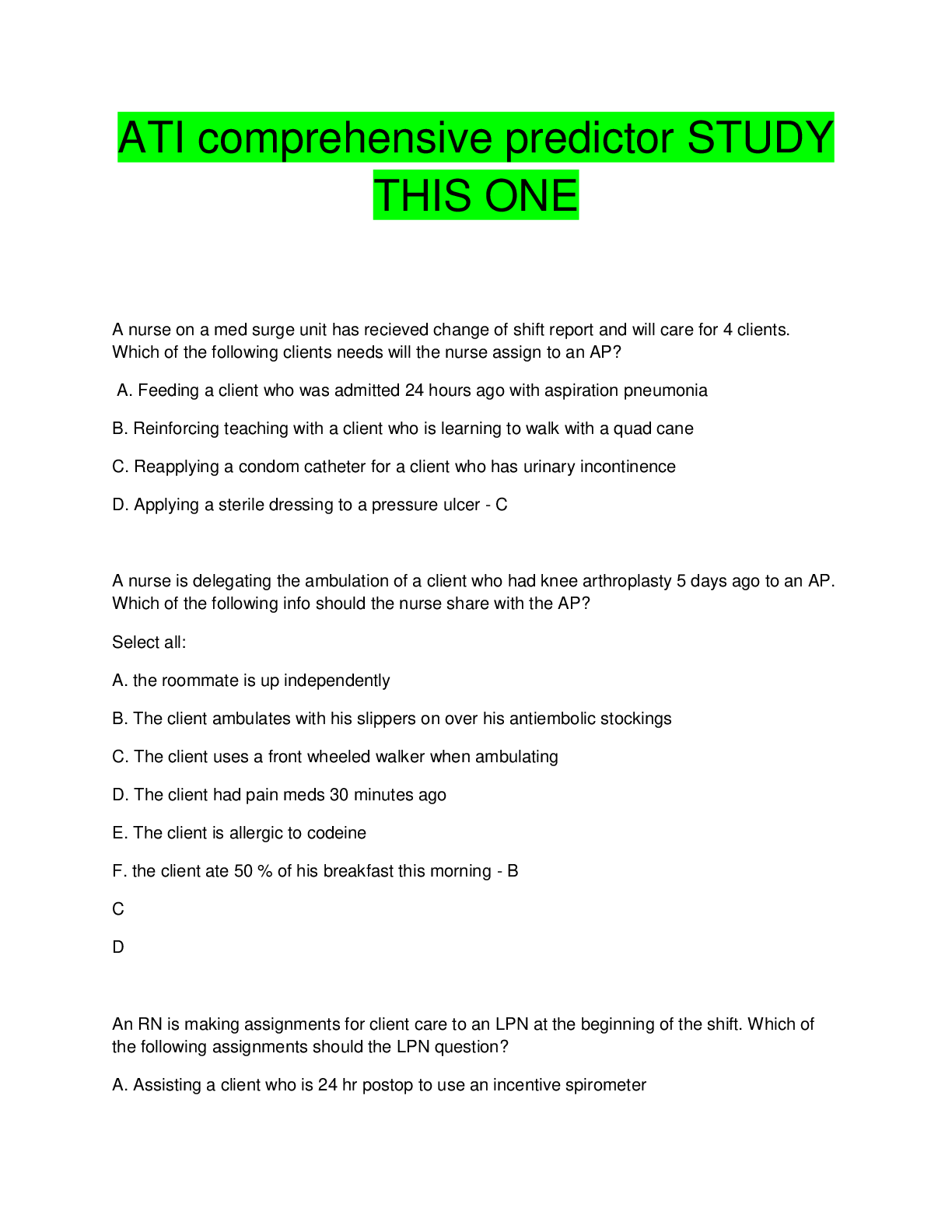


.png)
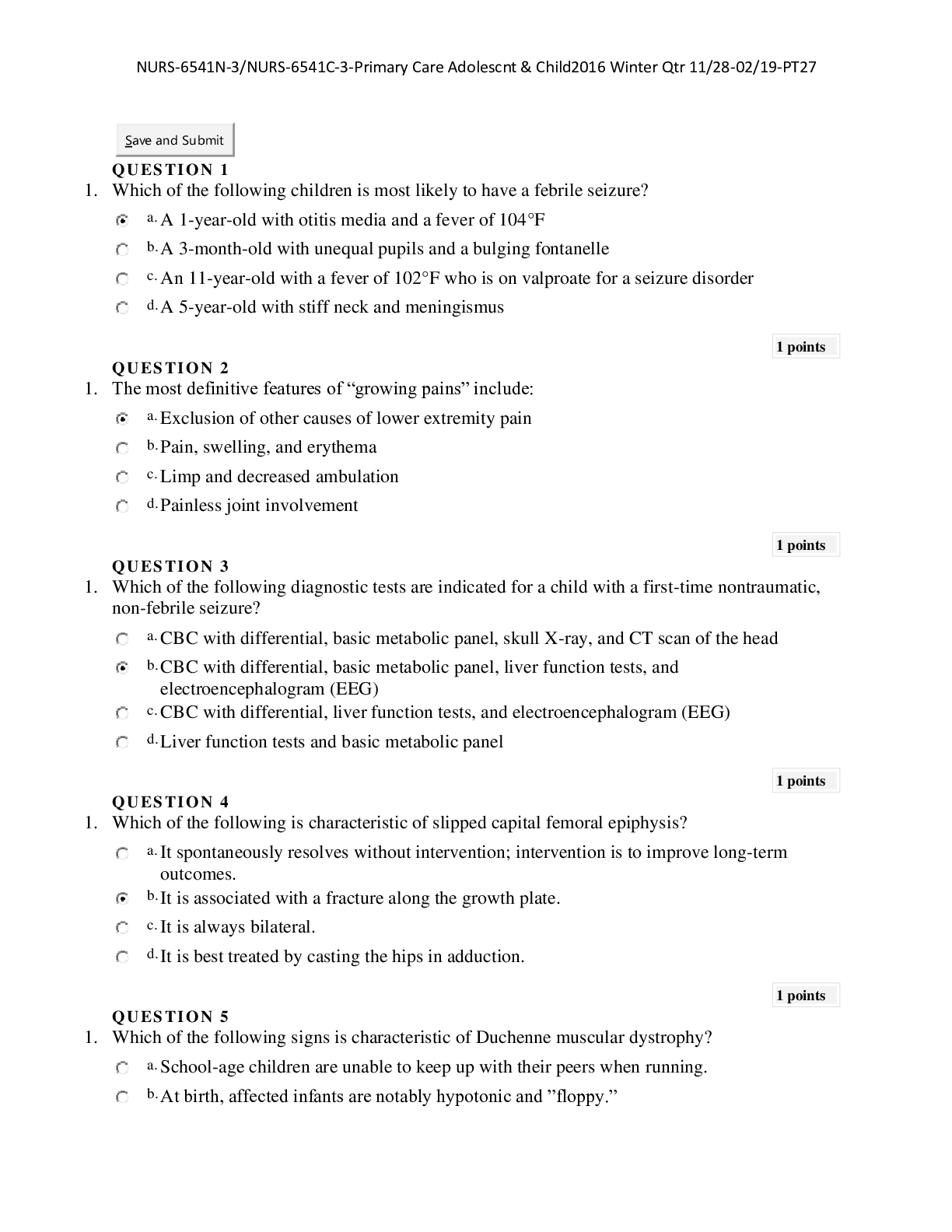
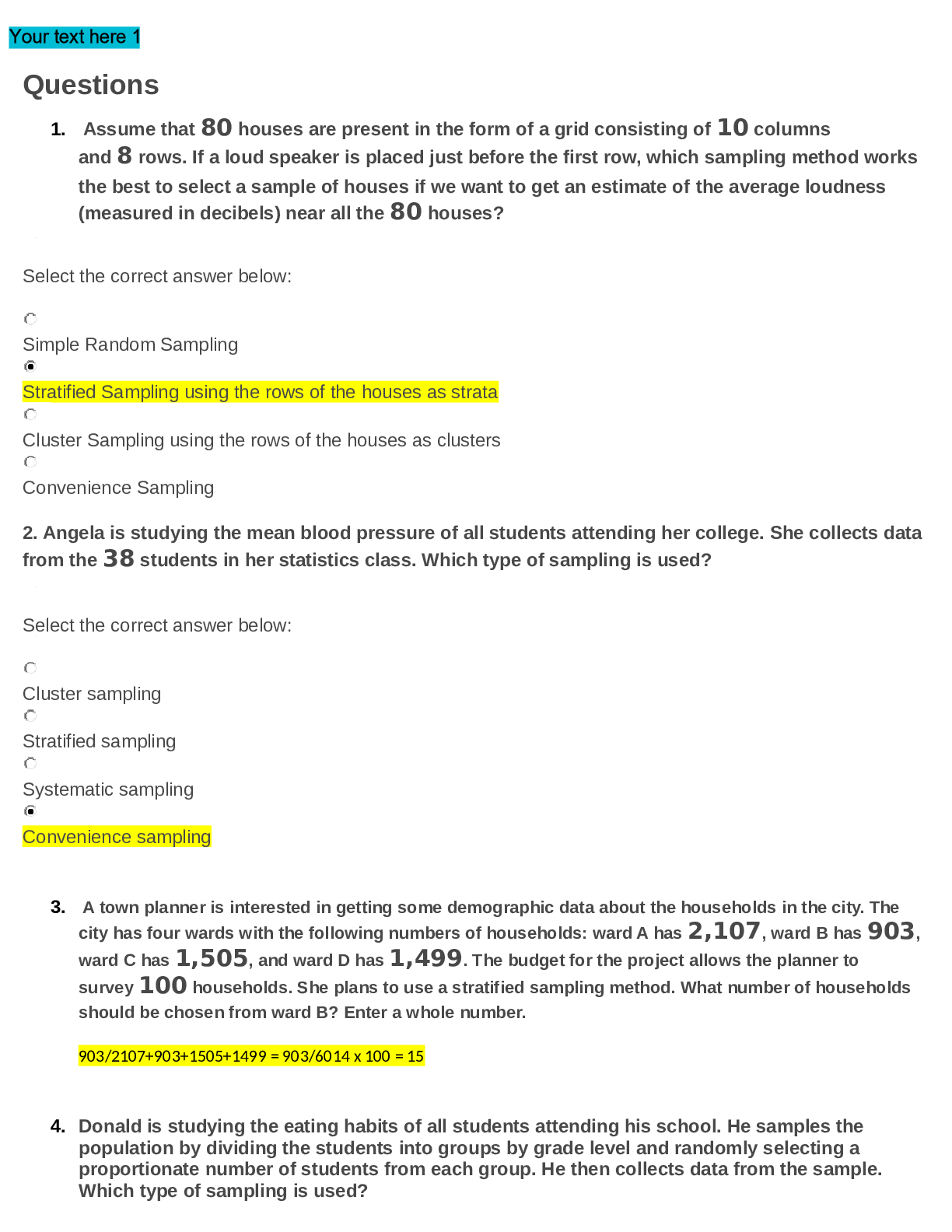

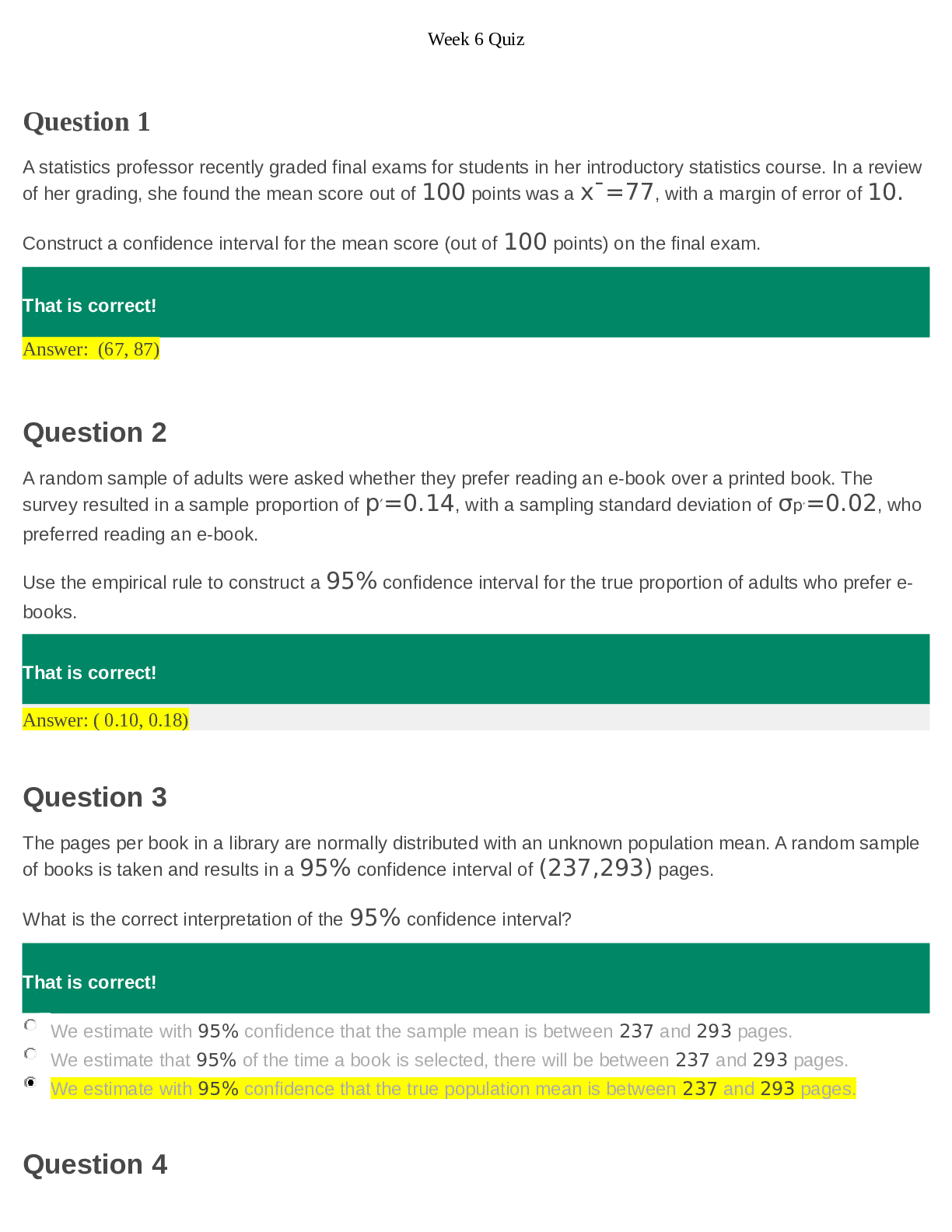
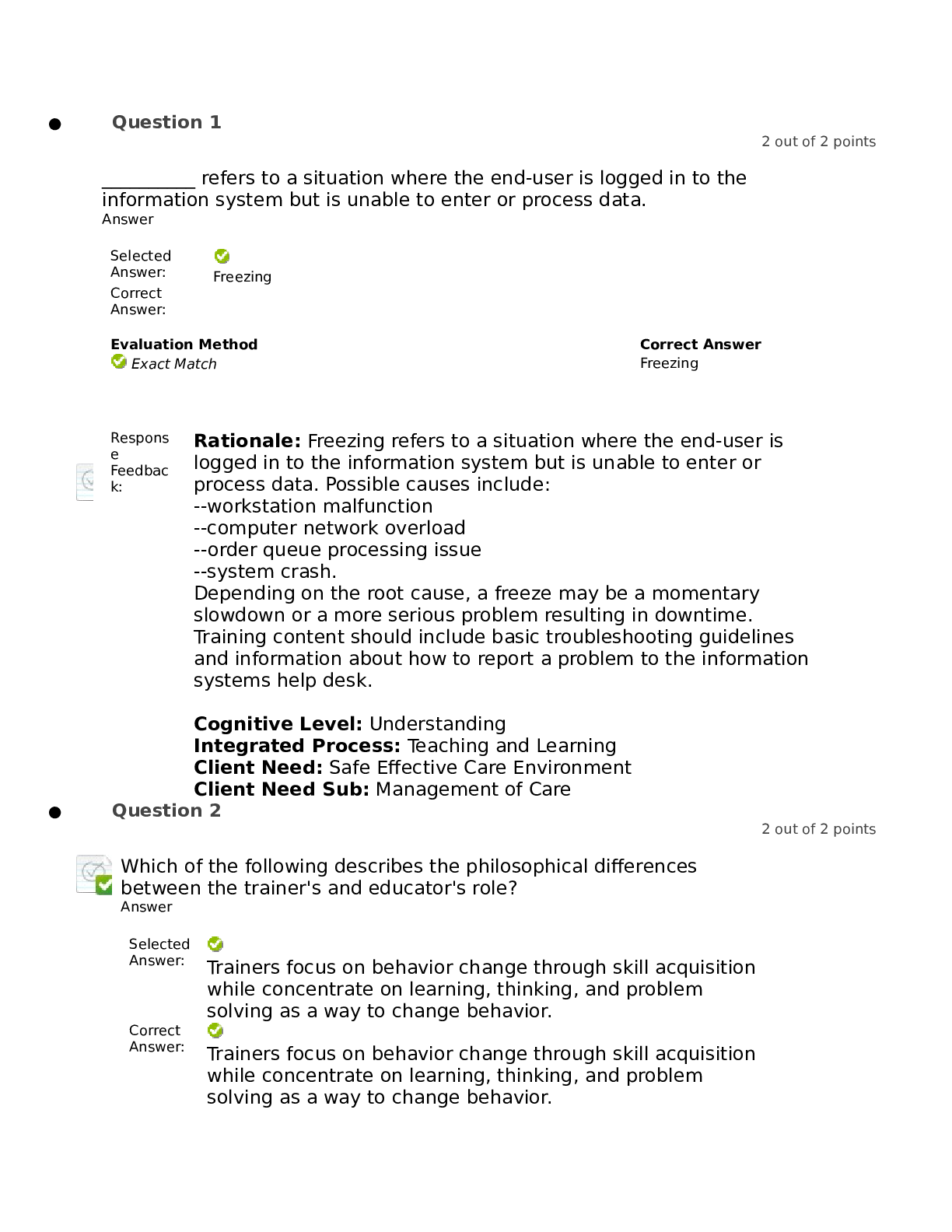

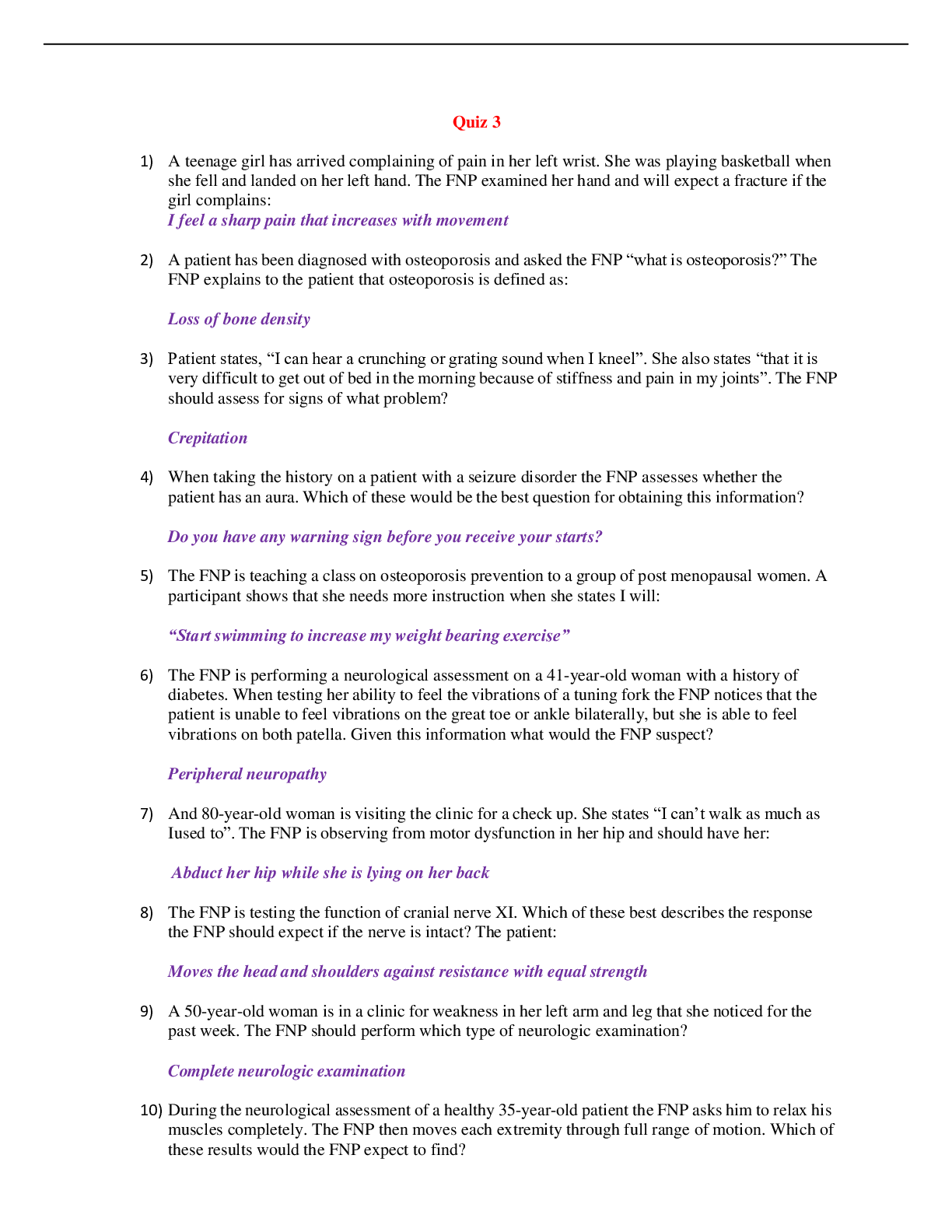
.png)

